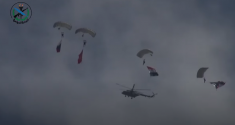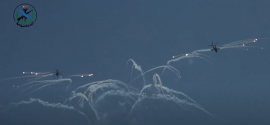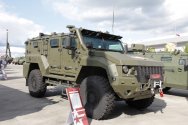this war tho kinda made "lowers" my faith to lightly armored vehicle. I understand the Russian thinking of having heavy firepower in their BMD's so that VDV can scout ahead and give targets to the BMD's for engagement. Nonetheless the proliferations of ATGM's and drones kinda calls that something needs to be done in survivability department.
That's not how VDV fights and this is not how BMD's came to be.
VDV is not a mechanized formation but an airborne formation that fights as motorized infantry on the ground. This was the difference between Soviet airborne and NATO airborne formations which were foot infantry. Soviets wanted to give their airborne the advantage of mobility and light armour over light infantry - including airborne - that would be sent to counter VDV. This is how BMD-1 was conceived in 1960s.
BMDs are also even less "mechanized" than BTR-60/70/80 let alone BMP-1 because of bad ergonomics. Troops must disembark before going to battle otherwise they end up like in several places in Ukraine - like fish in a barrel.
Despite the similarity of BMD and BMP names the BMD is a direct fire support vehicle first and personnel carrier providing mobility second. In VDV doctrine BMD is therefore not an IFV substitute but a MBT substitute because tanks move infantry on the battlefield as well.
BTR-D was developed from BMD-1 because of the limitations imposed by required size and mass. The primary characteristic of BMD and BTR-D was the ability to be airdropped and immediately enter the fight. The turret from BMP-1 installed on BMD-1 was taking too much space so a turetless and enlarged vehicle was developed so that VDV infantry companies could have sufficient size otherwise they'd be deprived of mobility and/or would have to use other vehicles.
People usually focus on BMDs because they are deployed with assault platoons and are the first line of fighting but BTR-D plays exactly the same role in maneuver. But this again shows that BMDs are much closer to tanks rather than IFVs in their role if we compare it to ground forces tactics.
The first generation was BMD-1 with 2A28 73mm gun from BMP-1. The change to 2A42 30mm gun in BMD-2 came along with the change from BMP-1 to BMP-2 and main armament in ground forces.BMD-1 and BMD-2 are the same chassis with a different turret.
The second generation was BMD-3 which was developed in mid 1980s and entered service in 1990. It had a completely redesigned chassis with hydropneumatic suspension and the same turret as BMP-2. There were only 137 BMD-3s produced by 1997. BMD-4 is an upgraded BMD-3 with new turret derived from BMP-3. It entered service in 2004. BMD-4M is a further upgrade presented in 2008 when production of BMD-4 was moved from Volgograd to Kurganmash.
After acquiring rights Kurganmash immediately began lobbying to get new orders while VDV resisted stating that the new vehicle doesn't meet requirements. Both VDV and Kurganmash were right and wrong at the same time. And here the problems begin.
BMD-4/M is a 1980s update on 1960s idea implemented 20+ years later.
By 2008 VDV revised its doctrine and decided on a completely new direction. While previously it was a parallel conscript formation that remained separate for historical and political reasons under the modernization plan for the entire Russian Armed Forces the VDV intended to become a fully professional rapid reaction force. Where previously VDV were glorified air-droppable motostrielki arriving by air but later fighting as mechanized infantry, they were to become a more universal and competent fighting formation that would be primary force for intervention similar to America's Marine Corps. The use of helicopters was being introduced on a much broader scale while ground forces had access to helicopters reduced after 1991, and the helicopters themselves were moved from the army to the Air Force.
This is precisely why MRAP vehicles such as Tigr or Typhoon were developed but there weren't enough funds to start large scale acquisition.
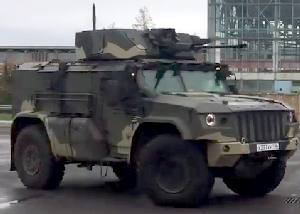
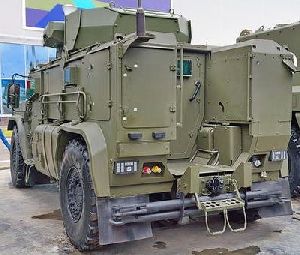
VDV divisions would also receive a battalion of modernized tanks (T-72B3/B3M) for support in more conventional operations because BMDs were considered ineffective. This is why the 31st Brigade in Ulyanovsk was assigned with its own helicopter regiment to test if it would provide benefits justifying such expenditure. BMDs would likely be retained as they provided cross-country mobility but VDV would no longer be a "BMD infantry". Helicopters were the main focus as far as VDV was concerned but there weren't enough of them at the time and there was competition for resources with VKS.
Currently the VDV is stuck with one leg in the past using BMDs and with one leg in the future using wheeled MRAPs and its own helicopters. The decision to expand the VDV in December of 2022 probably means that the modernization will be further delayed or even suspended indefinitely.
BMDs are still being purchased because of institutional inertia, political orders from Kurganmash as well as the immediate need to use VDV in combat which can only happen with old doctrine and tactics. VDV would go into combat in Ukraine primarily using BMD-2 as vehicle but they fought primarily as light infantry. And they performed very poorly in combat conditions. The armour on these vehicles is non-existent. It protects against nothing and the ergonomics makes them into deathtraps.
The main reason why VDV wanted more 4x4 vehicles was because they're better as infantry vehicles allowing the troops to move in and out of combat faster. BMDs are horrible at that. They're good cross-country but slower on the roads. The idea that you can airdrop them makes little sense anymore so the main advantage is gone while drawbacks remain. It's better to develop better cushioning solutions and drop 4x4.
As for "heavy firepower" - BMD-4 has a low pressure 100mm gun which is used for launching ATGMS and HE-FRAG shells for direct fire support as well as stabilization of the 2A72 30mm gun which is the primary weapon. All these are better achieved with lighter infantry support weapons and ATGMs and occasional 30mm RCSWs.
This is ZBD-03 and BMD-2.
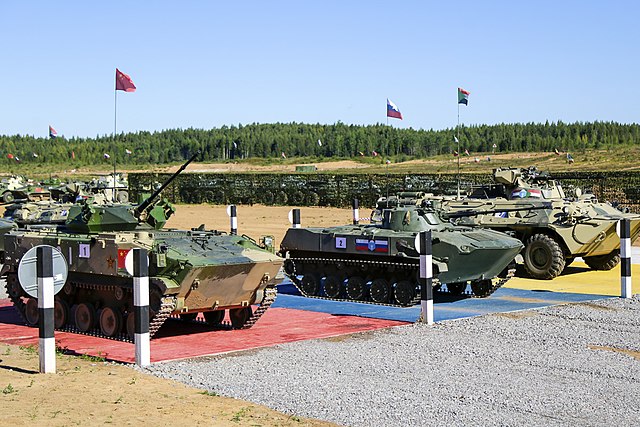
ZBD-03 entered service in 2002 so it's a 90s project which is forgivable. Both are bad but at least ZBD-03 has better ergonomics for troops and despite greater volume weighs only 8t vs 11,5t of BMD-2 so it doesn't pretend to be armored. So paradoxically it's a better BMD/BTR-D than Russian equivalent. It does well what it does well, and doesn't pretend that it does well what it can't even do semi-decently.
If you follow the updated to list by Oryx you'll note that BMD losses in Ukraine stopped very quickly while for all other vehicles continued.
| date | BMD-4 | BTR-MDM | BMD-2 | BTR-D + unknown |
| 23 Apr 2022 | 42 | 10 | 97 | 59 |
| 24 Feb to 23 Apr (+59 d) | + 42 | +10 | +97 | +59 |
| 25 Aug 2022 | 53 | 11 | 117 | 54 |
| 23 Apr to 25 Aug (+125d) | +11 | +1 | +20 | -5 |
| 30 Dec 2022 | 60 | 13 | 187 | 79 |
| 25 Aug to 30 Dec (+ 125d) | + 7 | + 2 | + 70 | + 25 |
| 10 May 2023 | 69 | 17 | 207 | 80 |
| 30 Dec to 10 May (+131d) | + 9 | + 4 | + 20 | + 1 |
The explanation is that after April VDV stopped using these vehicles in combat aggressively until the counteroffensive revealed additional losses and some were lost in Bakhmut. 208 vehicles in 59 days and 165 vehicles in next 381 days.
In reality BMD-4 is a joke and 2S25 with 125mm gun is a bad joke. But in Russia reality is just a suggestion.
If production was a problem they would not have been firing cruise missiles in huge salvos for close to a year.
So since 24 February 2022 (441 days) there has been only a handful of medium-sized (50-100 missiles) attacks and another handful of small attacks production is a problem.



